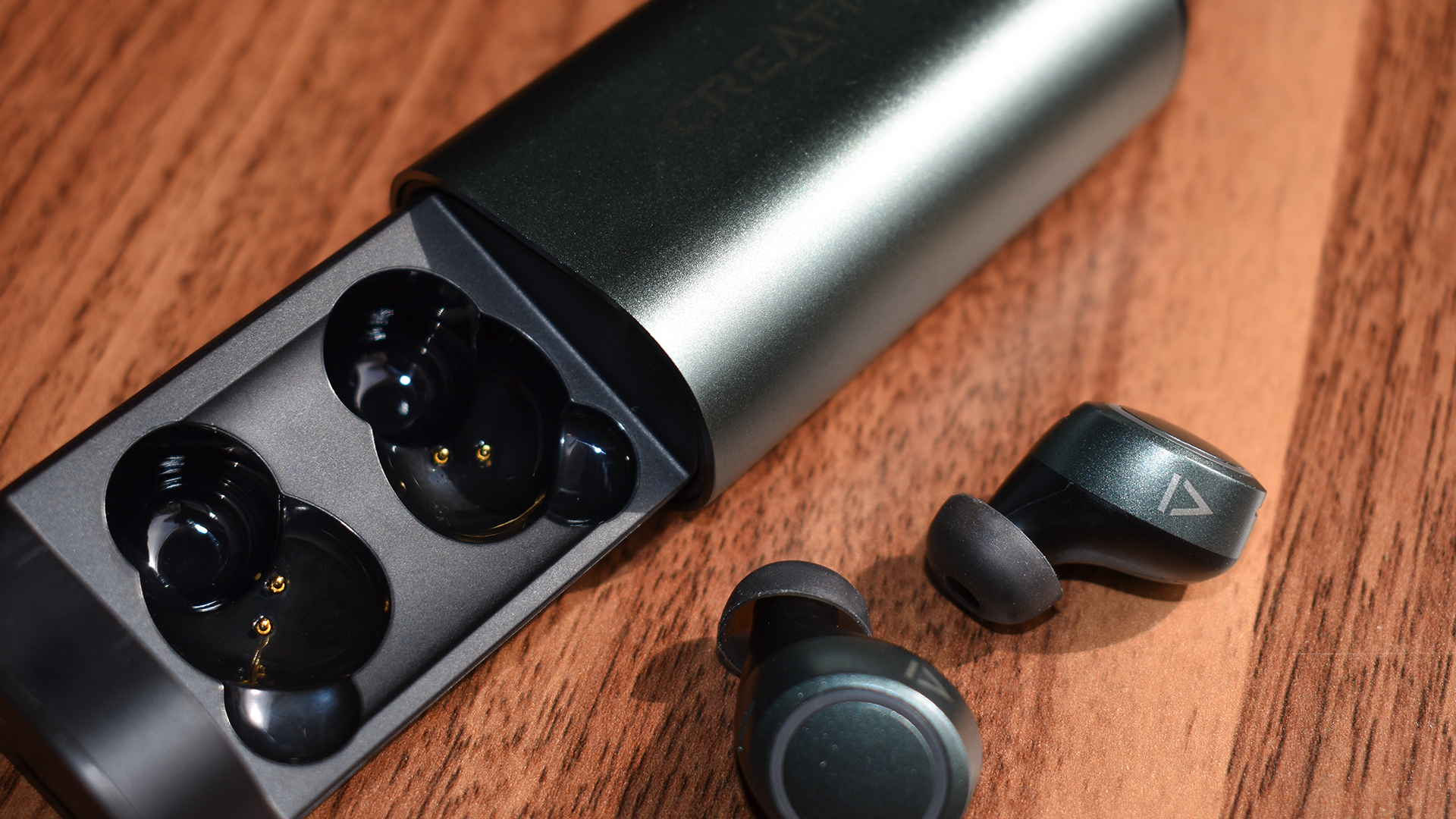
A few months ago, xMEMS revealed its unique solid-state speaker technology, which replaces traditional voice coils, magnets, and diaphragms with an all-silicon driver design. These solid-state MEMS speakers are printed like computer chips, they use very little power, and notably, they may provide greater accuracy and clarity than traditional speaker architectures. Now, Creative says it’s preparing to launch a pair of wireless earbuds with xMEMS’ drivers by the end of 2023, giving us our first taste of the new technology.
This stuff is a bit complicated, so let’s try to break it down. In a traditional speaker, a copper voice coil presses against a small portion of a diaphragm to produce sound. This architecture works well, even at large or small sizes. But because of the minimal surface contact between the voice coil and diaphragm, traditional speakers are prone to distortion at high volumes. They have a somewhat uneven phase response, meaning that certain audio frequencies hit your ears at the “wrong” time (which can lead to muddiness, especially in spacial audio applications). And, because old-fashioned speakers are current-driven, they aren’t great at accurately reproducing fast transients (they need to “ramp up” to a high volume and may continue vibrating when they shouldn’t).
Like a traditional speaker, the solid-state speaker developed by xMEMS vibrates a diaphragm to produce sound. Here’s the difference; the solid-state speaker uses a MEMS (micro-electromechanical systems) manufacturing process, which combines semiconductor technology with moving parts. MEMS is responsible for a ton of cool stuff, including the accelerometers in smartphones and the micromirrors in your DLP projectors. Really, the xMEMS speaker isn’t all that different from a computer chip, which is why it can be so small and compact.
Other companies have developed MEMS speakers, but xMEMS is the first to do so with an all-silicon design. The xMEMS speaker is also notable for its piezoelectric layer, which acts as the driver and makes contact with almost 100% of the silicon diaphragm’s surface area. Thanks to the great surface contact, xMEMS speakers are resistant to distortion and offer a shockingly accurate phase response (each frequency is produced at an accurate time). And because piezo devices are voltage-driven, rather than current-driven, they have a much faster transient response than traditional speakers (a snappy sound will arrive and diminish quickly, rather than ramping up and down).
Of course, we can’t blame anyone for being skeptical. It’s hard to imagine how a tiny MEMS device, which isn’t all that different from a phone’s accelerometer, could produce audio at a higher quality than traditional drivers. That’s why we’re excited to test this technology ourselves—it’s weird, interesting, and kind of unbelievable. If you’re curious, I suggest checking out xMEMS’ website for official documentation.
Creative plans to launch its first solid-state earbuds using xMEMS’ technology later this year. But it hasn’t revealed any information about these earbuds. Pricing, features, and other details are unknown. Note that some hearing aids already use xMEMS’ drivers.
Source: Creative & xMEMS via TechRadar







